Halcyon Hall Hotel
Before the Alfred I Dupont building on Flagler Street, there was the Halcyon Hall Hotel and arcade. It was constructed by Salem & Emily Graham and it opened on January 20, 1906.
The Halcyon Hall Hotel was as much of a Miami pioneer as the men who built it and the people who called it home. It was built at a time when Miami was trying to find its identity. It provided a choice for luxurious hotel accommodations when Henry Flagler’s Royal Palm Hotel was the top destination in town.
The hotel was the dream of the Grahams. They built it on their own terms, based on their own plans and with mostly borrowed money. However, dreams can lose their charm when they result in hardship. The thirty-one-year history of the hotel had its ups and downs. However, it left an enduring image of the pioneer spirit that made early Miami a city of possibilities.
Salem & Emily Graham
Salem and Emily Graham were originally from Canada. The Grahams moved to Palatka, Florida when they were both in their early twenties. The couple operated a hotel in Palatka during the winter and another one in Canada during the summer months. The establishment in Palatka was called the Graham Hotel. The couple managed it for twenty years and learned the nuances of running a seasonal hostelry in Florida.
However, the freezes of the mid-1890s forced the couple to consider a different location. Once they heard that Flagler was going to extend his railway to the banks of the Miami River, Salem decided to take a trip south to see the area for himself.
After a quick inspection, the couple decided to move to what would become the City of Miami. He leased a house from Bill Brickell on the south side of the Miami River and opened his namesake hotel. The Graham Hotel was the first land-based inn in the Miami area around the time of incorporation.
Julia Tuttle and her son were building the Hotel Miami and were hoping to open the first hotel in Miami. However, there were numerous construction delays and it didn’t open until January 22, 1897.
Neither Julia nor Harry had experience running a hotel, so they hired Salem Graham to help manage the completion of their hotel and then run it once it officially opened. Hotel Miami accepted guests during the construction of the building, so most guests were happy when the Tuttles hired a professional manager.
The Grahams earned an excellent reputation for running hotels. In addition to operating the two inns, the Grahams also opened a small bakery on Avenue D (today's Miami Avenue). The couple exemplified the pioneer spirit and established themselves as business leaders in the young City of Miami.
By 1899, the Grahams closed their Southside Graham Hotel and moved from managing the Hotel Miami to running the Biscayne Hotel on the corner of Twelfth Street and Avenue D (today's Flagler Street and Miami Avenue). The Biscayne Hotel was a mainstay on this corner until 1936, when Burdines purchased the land to expand their department store.
However, it was Salem and Emily’s dream to build and open a grand hotel that would compete with Henry Flagler’s Royal Palm Hotel. It was a tall order to compete with the Florida East Coast Railway’s flagship hotel in a railroad town. However, the Grahams were not discouraged by a challenge.
Myth of Hotel’s Architect
In a special magazine edition of the Miami Metropolis in 1901, the Grahams shared a drawing of their vision for the Halcyon Hotel. However, the couple needed to purchase land and secure funding before they could commence building their dream hotel.
One of the famous myths in Miami’s history was the identity of the architect for the Halcyon Hall Hotel. It was believed that Stanford White was the hotel’s architect. White was a famous architect in the early 1900s and was well known for designing the second Madison Square Garden in New York City. He designed a number of iconic building in Italian Renaissance design that were built in Boston and New York during the early 1900s.
He was also the victim of one of most high-profile crimes of the early twentieth century. He was murdered by Pittsburgh Playboy, Harry K. Thaw, at the Madison Square Roof Garden in New York City on June 25, 1906. The conflict was over a woman and the very wealthy Thaw was found not guilty based on a plea of insanity. In 1954, Twentieth Century Fox made a movie about the murder and trial called “Girl in the Red Velvet Swing”.
The legend was that the Halcyon Hall Hotel was the last building he designed prior to his murder. Part of the reason for the myth may be that when White visited Miami, he met with Emily Graham to provide feedback on her original drawing. While White may have encouraged the addition of the turrets at the top of the hotel, the truth is that he had very little to do with the architectural diagrams.
The real story is that the Halcyon Hotel did not have a professional architect design the building. Emily and Salem designed their hotel based on features that they liked when visiting Europe and touring various castles. They did hire Walter Crofts to act as the draftsman to put the Graham’s ideas on paper, but he was not an architect by trade.
Construction of the Hotel
Three years after the 1901 article in the Metropolis, the Grahams were ready to begin the project. They purchased several lots at the corner of Twelfth Street and Avenue B (Flagler Street and NE Second Avenue), and the hotel was to span an entire block north to Eleventh Street (NE First Street). Once completed, the hotel had a frontage of 244 feet on NE Second Avenue and 144 feet extensions on Flagler and NE First Streets.
The purchase of the land and construction costs were estimated at $124,000. The investment was financed by the Fort Dallas Bank for the full amount. The construction company hired was Capital City Building Company out of Montgomery, Alabama. Capital City also built the predecessor to today’s County Courthouse on Flagler Street.
One of the reasons for selecting Capital City as the construction firm was based on their knowledge of using Miami stone as a key building material. Oolitic limestone blocks were milled out of the Offer-Conkite Quarry in the Southside neighborhood (today’s Brickell neighborhood). It was located at roughly SW Second Avenue and Tenth Street near the Brickell Metrorail station.
Billy Offer devised a machine to cut through the limestone in any shape needed. The oolitic limestone is somewhat soft under ground but hardens when it is exposed to air. The blocks of limestone used for the exterior of the Halcyon Hall were provided by the Southside quarry. In total, the hotel required 70,000 cubic feet of stone blocks.
The ground breaking for the hotel took place on March 18, 1904. Given the lack of a professional architectural design, the project proceeded slower than anticipated. Mistakes that could have been avoided with a professional plan led to both time and cost overruns. For example, when the contractor was ready to install the lavatories, they discovered that plumbing was not provided in the architectural drawings.
While not necessarily the contractors fault, the man originally in charge for Capital City, E.N. Marvick, was replaced half way through the project by Julius Issacs. While it took nearly twenty-one months from the start of the project, the completion of the hotel was near by the end of 1905. At the time it opened in 1906, the total cost of land plus construction totaled $300,000, which was more than double the original estimate.
Opening of the Halcyon Hall Hotel
The official opening of the hotel was January 20, 1906. Although it's grand opening wouldn’t occur until the next winter season, there was plenty of excitement over the introduction of a new luxury hotel in Miami.
The hotel was a five-story building consisting of 144 rooms which featured mahogany furniture and polished hard wood floors. Each room included electric lights, steam heat and a telephone.
In Thelma Peters book, Miami 1909, she described a subset of luxurious rooms in the hotel:
“Thirty-two of the rooms were as deluxe as anything found at the Royal Palm Hotel, all are large corner rooms with private or connecting baths, some with alcoves in the turrets that had windows on three sides with fine views of the bay two blocks away.”
Peters knew the hotel very well. She married the son of Thomas Peters, who later owned the Halcyon, and lived in the hotel for a short time as a newlywed.
The first floor was devoted to stores, offices and recreational rooms. One of the rooms on the first floor was a billiards room and another was a bowling alley. Salem Graham had a keen eye for detail and made sure that common areas were both functional and elegant.
Salem Graham put a subtle stamp on his hotel by labeling each of the five floors with the letters that comprise his first name. From bottom to top, the floors were labeled: S-A-L-E-M. In addition, the Grahams did not approve of alcohol consumption, so there was no bar in the hotel. Throughout its thirty-one-year history, a bar was never added as a feature of the hotel. Hotel guests had to go to other establishments if they wanted to enjoy an alcoholic beverage.
Panic of 1907
Much like the Royal Palm Hotel, the Halcyon Hall Hotel was only open during the winter season. It opened for its first official season on December 15, 1906 with all the pomp and circumstance of a Royal Palm Hotel winter opening. The Halcyon Hall Orchestra performed during the grand opening as well as during their New Year’s Eve celebration. The Miami Metropolis declared the Halcyon’s New Year’s Eve Ball as the event of the 1906-07 winter season.
While the hotel welcomed 1907 on a high note, it would prove to be the start of a very difficult year for the property. On July 5, 1907, the bank that provided financing for the hotel collapsed.
The reaction to the news of the collapse was called the ‘Panic of 1907’. The event led to a complete loss of confidence in all the financial institutions in the young city of Miami. The other two banks, Bank of Bay Biscayne and the First National Bank, survived the panic, but the Fort Dallas Bank was forced into bankruptcy.
The Halcyon Hall Hotel cost overruns were one of the reasons for the collapse. The bank was also heavily invested in a street railway project that was not economically viable. The two investments were big reasons for the bank becoming insolvent.
The bank was placed under a receiver from Washington, D.C., by the name of Joseph K. McDonald. Joseph K. was not the same as Joseph A. McDonald, who was a key executive for Henry Flagler and a Miami pioneer. The receiver let the street railway collapse and sought a buyer for the Halcyon Hall Hotel. In the meantime, he assigned A.L. Kline to manage the hotel until a buyer was found.
The Grahams only owned the Halcyon Hall Hotel for one year. They purchased another hotel and named it the Gralynn. The name of the hostelry was derived from a combination of the couple’s last name and Emily’s maiden name. The Gralynn Hotel was located at 134 SW First Avenue and stood at that location until it was demolished in June of 1969. It was razed to make room for a parking lot.
The Kline Years
While McDonald was focused on trying to find a buyer for the establishment, Kline continued to upgrade the hotel. By his second year managing the property, Kline improved the common areas and added a garden tearoom. New lace curtains and expensive rugs were installed to provide an opulent appearance and an upscale experience. The tearoom was beautifully decorated and had an orchestra play at five o’clock every evening during season.
He felt that he needed to match the elegance of the Royal Palm Hotel. However, Kline was managing a business that was bankrupt. He did not have the budget nor the backing of Henry Flagler’s establishment.
The Halcyon Hall closed for the season in February of 1909. On March 23, one wing of the building caught fire. After the fire was extinguished, the damages were estimated at $10,000. In addition to paying for Kline’s upgrades, the receiver was faced with the necessity to repair the damage wing. In an editorial on April 26, 1909, the Metropolis editor wrote: “Halcyon Hall is proving an expensive luxury.”
Following the fire, Kline was fired and McDonald was relieved of his duties as receiver. Kline was largely considered incompetent, which ultimately led to the replacement of Joseph K. McDonald with a man who would later become an important business leader in Miami.
White Palace
On July 1, 1909, Frank B. Shutts moved from Indiana to replace McDonald as receiver of the Fort Dallas Bank bankruptcy. One of his first acts was to hire a property manager with an excellent reputation for managing hotels. His second act was to change the name of the establishment to the White Palace Hotel. Although it isn’t clear on how the name was chosen, the new name contributed to the urban legend that Stanford White was the architect of the hotel.
Mrs. Minnie Hall March was very efficient in managing her hostelry called the March Villas which is why she was hired by Shutts. She went on to manage the Halcyon from 1909 until 1921. The twelve years under March’s stewardship were called the “halcyon years of the Halcyon” by Henry Cavendish in a Miami Herald article entitled ‘Romantic History of Hotel Halcyon’.
March made the hotel more of a home. There were many of the same guests that returned year after year during her tenure. Matthew Elser and his wife lived at the Halcyon Hall for eleven years. Matthew was the founder and operator of the Elser Pier in downtown Miami in the 1910s. March stated that “the atmosphere was not at all that of a commercial hotel, but more like the atmosphere of a week-end party of a private home.”
By early 1911, Minnie March recruited investors and raised enough money to purchase the hotel. She was competing with several other bidders in an auction. On March 7, 1911, March and her investors placed the high bid and were awarded the right to purchase the hotel. The purchase price was $91,200. Her group outbid other Miami Pioneers including J.H. Tatum and Locke T. Highleyman.
Once the purchase was finalized and the funds disbursed to Fort Dallas Bank shareholders and depositors, Frank Shutts returned home to Indiana. However, he returned to Miami soon and became an important member of the business community. He founded the Shutts & Bowen law firm and purchased several evening newspapers to create the Miami Herald.
After officially becoming owner of the hotel, March renamed the establishment back to the Halcyon Hall Hotel. Miami residents never really referred to the hotel as the White Palace, so it made sense to change the name back to its original moniker.
Tomato King Buys Hotel
Prior to becoming part of Perrine, there was a town in south Dade called Peters. It was named for Thomas Peters, who built a very successful business growing and packing tomatoes in the area. Originally, he moved from central Florida to Lemon City following the great freeze of February 1895.
By the end of the 1890s, Peters purchased four acres of land in South Dade. He grew his holdings to 1,250 acres and most his land was dedicated to growing tomatoes. It was there that a town was formed and named for him. His agricultural operation became South Dade’s first multi-million-dollar business.
By 1900, Peter’s fields produced 24,000 crates of tomatoes, 10,000 of which were shipped elsewhere. The volume and efficiency of the operation prompted the Miami Metropolis to call Thomas Peters the “Tomato King” of Dade County.
His South Dade business was run so efficiently that Peters decided to focus on other ventures. He chose to diversify his wealth in real estate. In 1914, Peters partnered with Minnie Hall March and bought half interest in the Halcyon Hall Hotel for $92,500. A couple of years later, on October 16, 1916, he purchased the other half of the hotel for $145,000.
Peters made a sizable investment to modernize the hotel and build around the property. He constructed five arcades around the hotel to provide additional retail and entertainment space. By 1919, Peters had an idea to replace the Halcyon Hall with a much large hotel, but didn’t get the financing to pursue his idea.
Although she was no longer an owner, Minnie stayed with the Halcyon Hall for another five years to oversee the operation. She managed the property very efficiently from 1909 until 1921. The time under her management was the most prosperous and stable era for the hotel. The years prior and those following her tenure were mostly chaotic.
Litigation and Bankruptcy Again
On May 28,1921, the Miami News reported that Frederick H. Rand purchased the hotel based on a 99-year lease worth roughly $1,500,000. Rand had a plan to re-create New York’s Fifth Avenue in Miami along NE Second Avenue.
His purchase of the Halcyon Hall continued his collection of street corners along NE Second Avenue. Rand later built the Huntington Building (corner of SE First Street and NE Second Avenue), in 1925 and planned on building the Roosevelt Hotel (corner of NE Fourteenth Street and NE Second Avenue), in 1926. However, the Hurricane of 1926 and the end of the building boom led to him lose his financing, which in turn kept his dream from becoming a reality.
The lease agreement between Peters and Rand was a verbal contract. After agreeing to the details of the arrangement, Rand left for Europe for a couple of months. Peters got tired of waiting for the first payment on the lease and decided to go a different direction. In September of 1921, Peters disregarded his agreement with Rand, and turned over management of the hotel to H.S. Duncan for $40,000 on a one-year lease.
When Rand returned from Europe, he sued Peters to force him to honor their agreement. The law suit began in December of 1921 and lasted until June of 1929 when the Florida supreme court ruled in favor of Rand. Although Rand finally won his law suit, the victory was short lived.
Less than six months after the ruling, the Halcyon Hall Hotel fell into financial hard times once again. After the stock market crash of 1929 and the onset of the Great Depression, the hotel was unable to keep up with its obligation for a second mortgage of $800,000 provided by the Biscayne Trust Company. The trust forced the hotel into bankruptcy. On June 2, 1930, the hotel was up for sale on auction.
The hotel was bought during the auction by a partnership of two creditors, however, the sale was contested in August of 1930. The argument was that the sale price was well below market value. It took three more years, but the hotel finally sold a final time.
On July 3, 1933, an unnamed buyer purchased the hotel and the five arcades for $333,600 in cash. The buyer was later revealed as the Florida National Bank, which was a subsidiary of duPont Almours Security Company of Jacksonville.
Razed in 1937
The Halcyon Hall continued operating as a hotel until a decision was made to replace it with a much larger building to provide office space for the Florida National Bank. The bank had planned on replacing the Halcyon Hotel with a new building earlier, but the death of the Alfred I Dupont in 1935 delayed the project by a couple of years.
On June 1, 1937, the bank was ready to move forward with demolition and construction of what would be named the ‘Alfred I Dupont Building’. Demolition was a very slow process. When the hotel was torn down, it was taken down block by block.
The Miami Stone was sold to a variety of buyers that used the recycled blocks for other projects. Although it is unclear where many of the stone blocks were repurposed, we do know that some of the stones were used for the seawall at Morningside Park.
Construction for the Alfred I Dupont building began in 1937 and was completed in 1939. While the Halcyon Hall Hotel sat proudly at the corner of NE Second Avenue and Flagler Street for thirty-one years, the Dupont building has manned the same corner for seventy-eight years and counting. Let’s hope it continues to stand strong at a time when “out with the old” seems to be the unofficial motto for the City of Miami.
Resources:
Book: “Miami 1909”, by Thelma Peters (pages 74-83).
Book: “A Journey Through Time”, by Paul S. George (pages 40-43).
Book: “Miami The Way We Were”, by Howard Kleinberg (pages 114-115).
Miami News: “Town Topics”, March 18, 1904.
Miami News: “Halcyon Hall Hotel Throws Wide Its Doors to the General Public”, January 20, 1906.
Miami News: “Halcyon Hall Will Be Conducted by Mrs M.H. March For Season”, October 27, 1910.
Miami News: “Halcyon Hotel Sold at $91,200 Today by Special Master Price”, March 6, 1911.
Miami News: “Halcyon Hall Hotel Company Relieved Receiver’s Services”, June 2, 1911.
Miami News: “Thomas J Peters Takes Over Complete Control of Halcyon”, October 16, 1916.
Miami Herald: “Halcyon Hotel Sold on Basis of $1,500,000”, May 28, 1921.
Miami Herald: “Leases Halcyon Hotel for Year”, September 20, 1921.
Miami News: “Leasing of Hotel Halcyon Brings on Suit at Law”, December 14, 1921.
Miami News: “Pioneers Widow Returns to Miami”, January 12, 1929.
Miami News: “Court Upholds Halcyon Hotel Verbal Deal”, June 23, 1929.
Miami Herald: “Halcyon Hotel is Real Estate Prize in Miami”, March 22, 1931.
Miami News: “Halcyon Hotel Brings $333,600”, July 3, 1933.
Miami Herald: “Romantic History of Hotel Halcyon is Told as Landmark is Demolished”, June 13, 1937.
Miami Herald: “June Demolition Set for Graylynn”, May 18, 1969.
Images:
Cover: Cover: Halcyon Hall Hotel in 1906. Courtesy of Florida Memory.
Figure 1: Graham Hotel in Palatka, Florida in 1890. Courtesy of Florida Memory.
Figure 2: Graham Sketch of Halcyon in 1901. Courtesy of Florida Memory.
Figure 3: Offer-Conkite Quarry in 1904. Courtesy of Florida Memory.
Figure 4: Halcyon Hall Hotel on January of 1906. Courtesy of Florida Memory.
Figure 5: Fort Dallas Bank in 1900. Courtesy of Florida Memory.
Figure 6: White Palace Hotel & Dr. Jackson Home in 1910. Courtesy of Florida Memory.
Figure 7: Halcyon Hall Hotel on May 22, 1917. Courtesy of Florida Memory.
Figure 8: Halcyon Hall Hotel on April 1, 1922. Courtesy of Florida Memory.





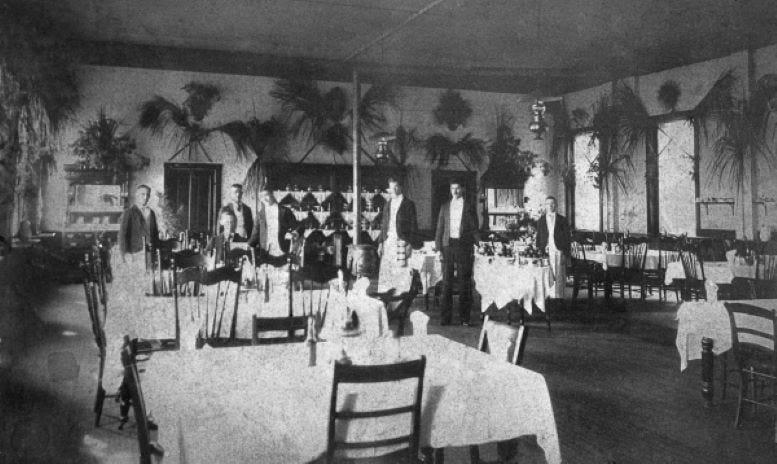
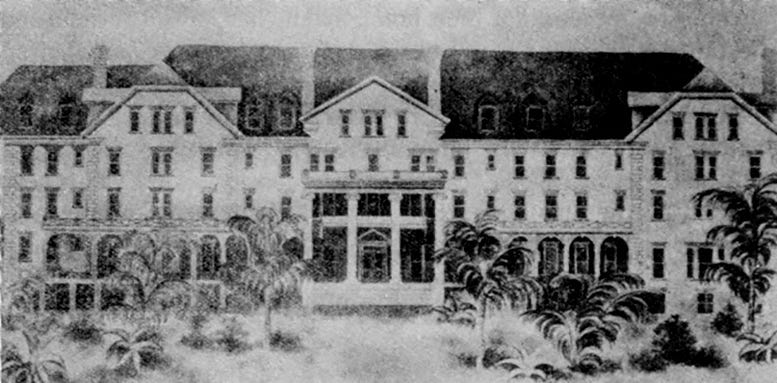
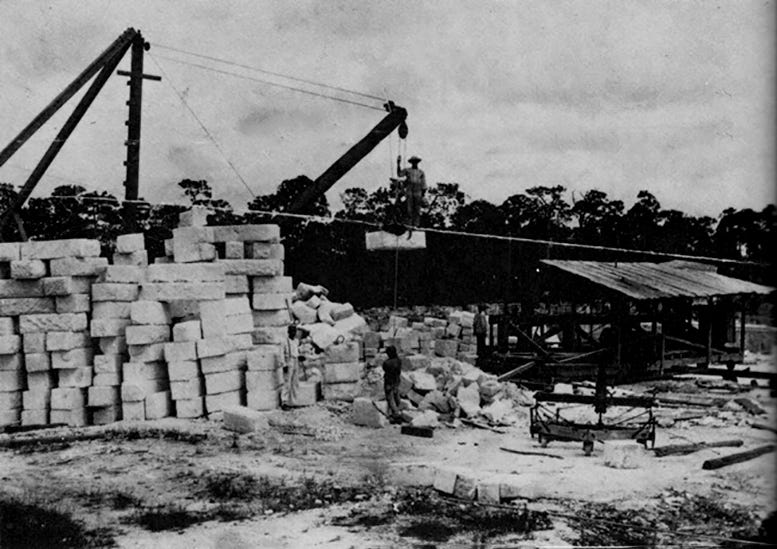
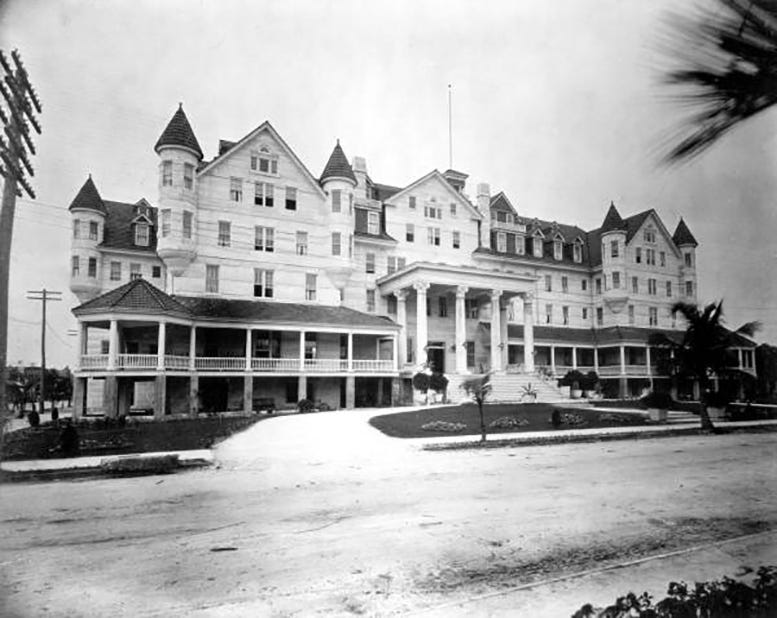
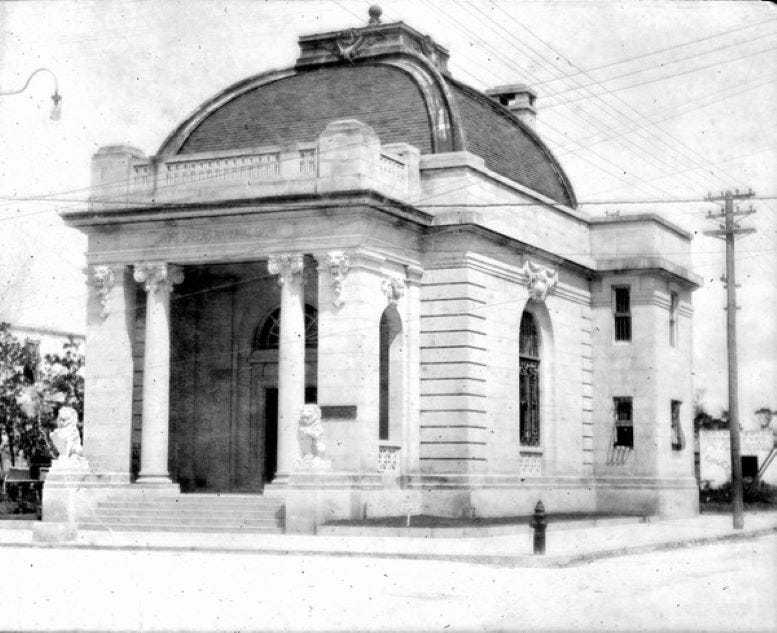

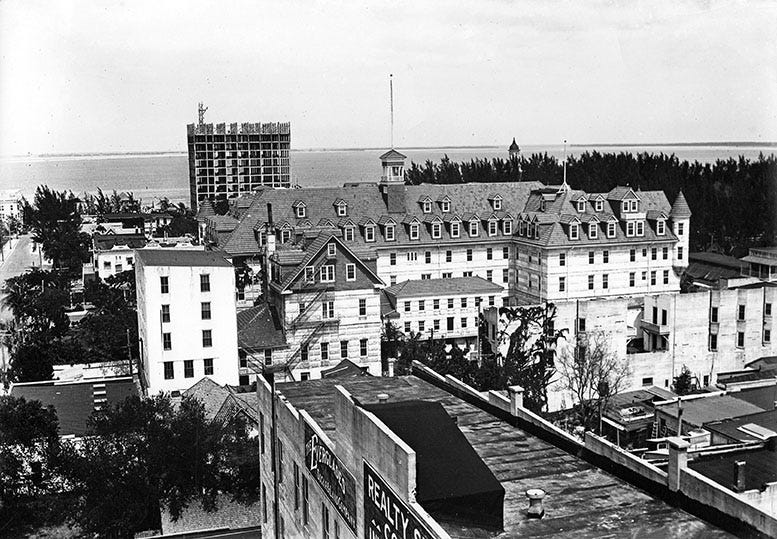
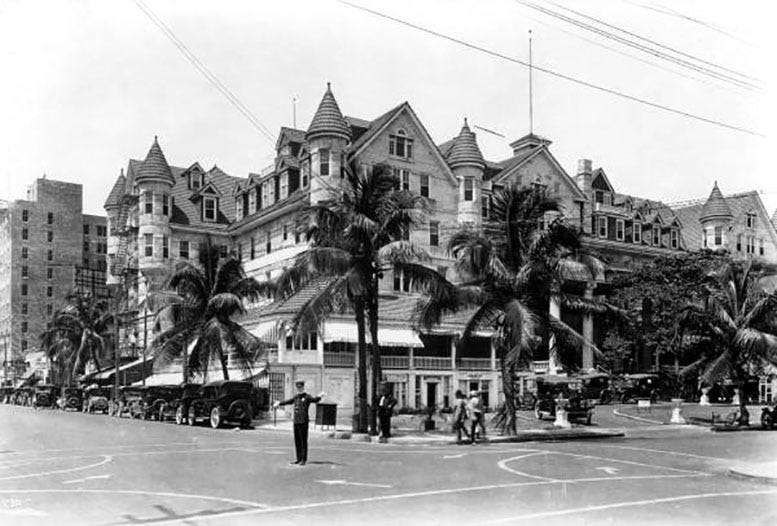
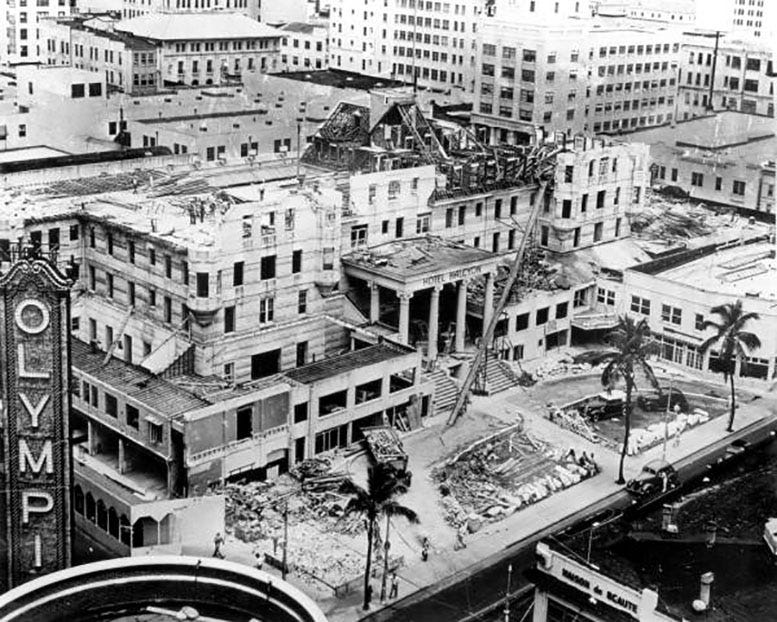
First I must say, I LOVE all of your fabulous articles Casey. I really, really enjoy learning more about Miami. Miami history is so deep and endless! I have to THANK YOU Casey! You and this article just solved a very long mystery for me. For many moons, I tried to figure out where "Frank's Magic Shop" was located. I found a 106 year old Ouija Board that had a "Frank's Magic Shop at ***Halcyon Arcade Miami FL stamped on it and could never find any info on it. I am so tickled to learn that my antique board game may of come from this very special hotel and arcade. Soooo cool! Thank you! - Christina V.- A Miami History enthusiast!